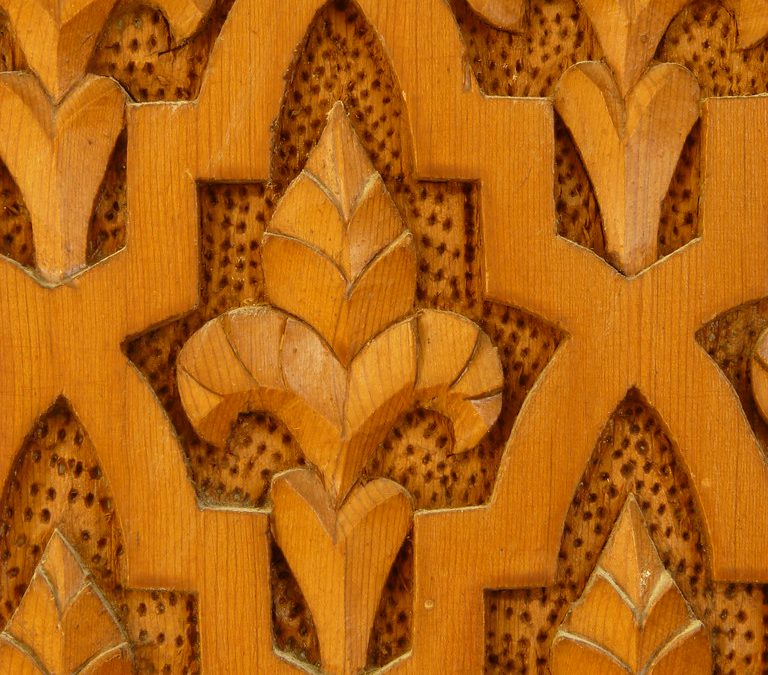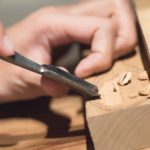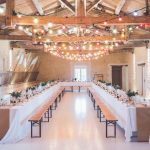Moroccan woodworking motifs and symbols have been used for centuries to express cultural ideas, beliefs, and stories.
From intricate geometric patterns to bold shapes and colors, every intricacy has a significance that dates back hundreds of years. These beautiful works are often seen in homes, businesses, public spaces, and more – living reminders of Morocco’s history and evolving culture. They represent traditional values such as hospitality, loyalty, courage, leadership, generosity, and respect.
Moroccan woodworking is not only aesthetically pleasing but deeply meaningful; it serves as a reminder of our shared human experience while reminding us to stay connected with our roots no matter where we may be. Let me introduce you to this captivating craftsmanship so that together we can appreciate its beauty and relevance today!
Overview Of Moroccan Woodworking
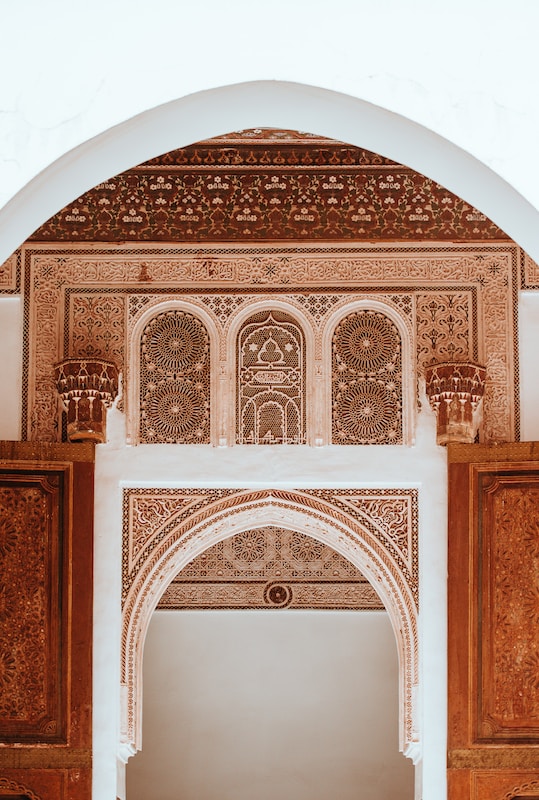
Moroccan woodworking is a captivating craft that has been part of the country’s cultural heritage for centuries. The traditional artistry and intricate symbolism of this time-honored practice have been passed down from generation to generation, with each artisan adding their personal touch to these timeless creations. From furniture and architectural features to decorative pieces, Moroccan woodworking is truly an awe-inspiring expression of creativity.
No two Moroccan woodworking projects are exactly alike; as such, each one carries its own unique story within its design. Its symbolic motifs often depict aspects of nature or religious beliefs – birds soaring through the sky or figures representing gods or goddesses – while others incorporate geometric shapes and patterns that can be seen in many places throughout Morocco today.
Apart from being aesthetically pleasing, these designs serve a functional purpose. By utilizing specific woods chosen for their durability and strength, along with various carving techniques applied by skilled craftsmen, Moroccan woodworkers create pieces that last much longer than those made using modern methods. They preserve their work in its original form for generations to come by doing so, which ensures that it remains unchanged.
The vibrant colors and intricate details found in Moroccan woodworking make it instantly recognizable around the world. It’s no wonder why so many people flock to Morocco every year just to admire this beautiful art form firsthand – something you too should think about doing at least once in your lifetime!
Meaning Of The Symbols And Motifs
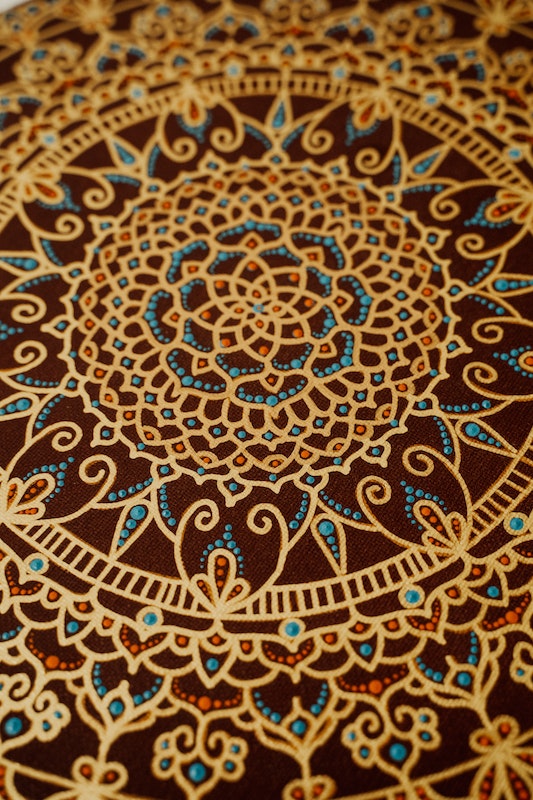
Moroccan woodworking motifs and symbols are often seen as mysterious. Many of these designs are steeped in symbolism, with intricate details that reflect the culture and tradition of Morocco. To better understand the meaning behind them, we need to look at the traditional symbols used, their cultural context, and the decorative motifs found within the hand carved wood panels around them.
The first step is to recognize some of the common carved symbols found in Moroccan woodwork – from abstract shapes like stars or crescents to more detailed figures such as animals or flowers. These symbols may be simple patterns meant to decorate a piece of furniture, but they can convey messages about people’s beliefs and values. For example, star-shaped carvings are traditionally associated with good luck while crescent moons signify fertility.
Traditional symbols aren’t limited to just objects either; Arabic calligraphy has been incorporated into many pieces of Moroccan woodworking for centuries. This type of inscription usually contains words from Islamic scripture or proverbs that carry symbolic meaning relevant to both religious faith and everyday life. Other inscriptions include geometric patterns which have spiritual significance, representing concepts such as eternity or infinity.
Lastly, architects need to think about how all these elements come together to create an overall design aesthetic unique to Morocco. If it’s zigzagging lines that symbolize movement or color combinations intended to evoke certain emotions, each element plays a role in creating something visually pleasing and culturally meaningful.
- Carved Symbols: Stars, Crescents & Animals
- Traditional Symbols: Calligraphy & Geometric Patterns
- Decorative Motifs: Color Combinations & Zigzag Lines – Nature-Inspired Elements: Flowers, Leaves & Trees
Geometric Patterns And Their Significance
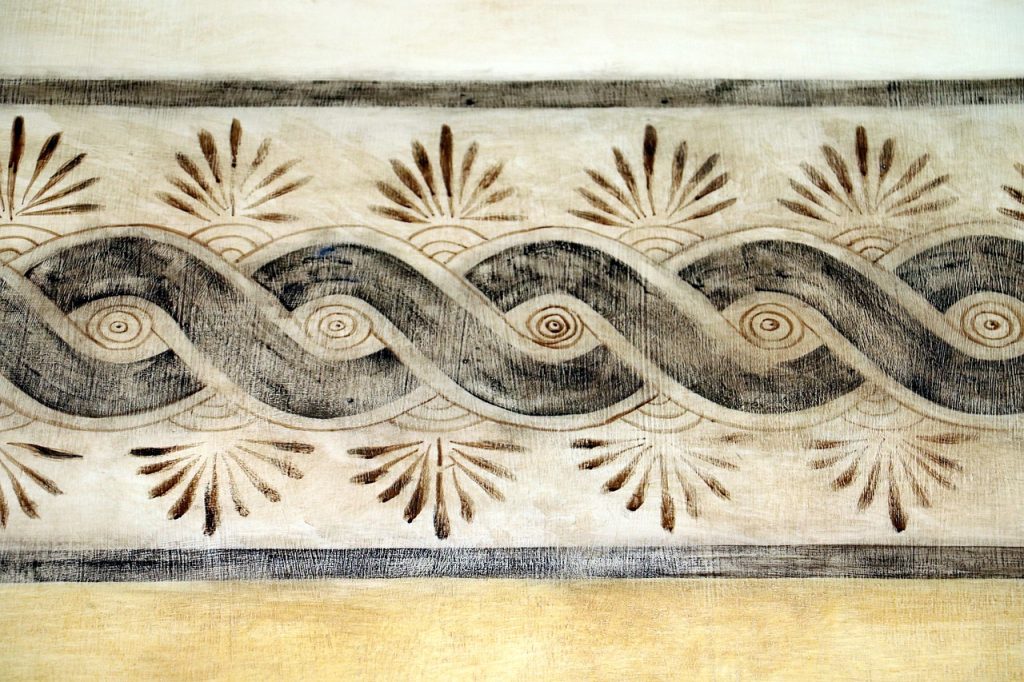
Moroccan woodworking motifs and symbols are a beautiful integration of artistry, craftsmanship, and culture. Geometric patterns have been used in Moroccan woodworking for centuries to create intricate designs that embody the spirit of this timeless tradition. Like many ancient cultures around the world, geometric shapes in Moroccan woodwork often represent spiritual beliefs and customs.
The use of triangles is perhaps the most prevalent among all other symbolic shapes found in traditional Moroccan traditional artisanal woodworking techniques. The triangle normally symbolizes strength and stability as well as masculine energy. Circles on the other hand signify femininity, protection, unity, and wholeness. Squares or diamonds are generally associated with balance, structure, and order while octagons can be seen to indicate infinity or never-ending cycles of life. These simple yet powerful symbols offer insight into both practical construction techniques as well as religious or cultural values cherished by Moroccan society over time.
Apart from the fundamental geometric shapes, artists create more intricate forms like curves, spirals, stars, and polygons by combining different elements, resulting in exceptional pieces of artwork. It’s no wonder why the intricacy of these pieces has made them so popular amongst collectors worldwide! Each piece is carefully crafted to showcase its distinct style while still reflecting an overall unified theme – whether it’s celebrating nature or honoring one’s heritage through symbolism.
By utilizing a variety of different craftsmanship techniques combined with meaningful symbolism, Moroccan woodworkers have created a type of artwork that continues to inspire people even today. From homespun furniture to exquisite sculptures that adorn walls across North Africa, each item is imbued with its own special story – just waiting for us to discover what lies beneath the surface.
Color Schemes In Woodworking Art
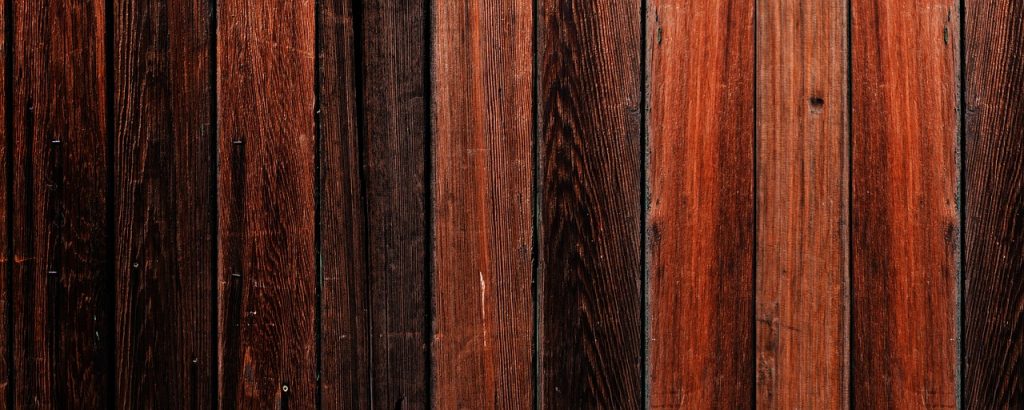
Color plays a major role in Moroccan woodworking art. Color schemes are a significant part of the symbolic meaning behind each piece. From vibrant hues to softer earth tones, these colors represent many different things. In some cases, they may be used to symbolize life or fertility while in others they could denote death and mourning.
The use of color is closely related to the particular of woodwork carving technique that is being employed. If a craftsman aims to create a more intricate design using their tools, they usually opt for darker woods such as walnut and mahogany. The reason is that these woods offer higher contrast in comparison to lighter woods like maple and cherry. This allows for intricate details that wouldn’t otherwise be visible in lighter-colored woods.
Besides, the type of finish applied to the final product can influence the symbolism of the work even further. A matte finish has less reflective qualities than glossy finishes which allow for deeper shadows and richer colors that emphasize certain motifs within the background of the design more prominently than others. On the other hand, brighter finishes bring out lighter elements and pastel shades so that all components of each motif become equally represented within the background of the overall composition.
In sum, it’s clear that color has an integral role in determining how we interpret Moroccan woodworking art pieces both aesthetically and symbolically. The craftsmanship behind this artwork is remarkable and its ability to communicate messages through various techniques and media is truly remarkable. Understanding how color affects our perception of a given piece helps us unlock its hidden meanings on a much deeper level!
Nature-Inspired Designs
The sun-drenched terrains of Morocco are home to some of the most unique woodworking motifs and symbols in the world. Like a storyteller’s brush, these intricate designs tell tales of ancient cultures and civilizations that have long since passed away. From ornamental doorways to hand-carved and carved wood panels and furniture pieces, Moroccan artistic craftsmanship is renowned for its use of nature-inspired patterns and shapes.
Woodworking motifs often draw inspiration from aspects of everyday life such as religious symbolism or local flora and fauna. Intricate geometric carvings serve as reminders of cultural origins while providing practical protective qualities like warding off evil spirits. Floral elements symbolize abundance, fertility, love, and joy; intertwined lines represent interconnectedness between people; crescent moons denote protection against bad luck; and circles reflect eternity and renewal.
Symbols made out of wood can be seen everywhere throughout Moroccan artistry–from wooden boxes with intricate carvings to beautifully handcrafted jewelry adorned with natural symbols like birds, flowers, or stars. Each piece has its special meaning derived from centuries-old traditions and beliefs. In case it’s a decorative door frame depicting interwoven vines or an intricately designed wooden bowl bearing the symbol of a fish, each item tells a story about Moroccan culture through its usage of carved wood symbols imbued with symbolic messages.
These treasured works help keep the legacy of Morocco alive by preserving traditional values through timeless artifacts crafted with skillful hands. Every time we witness one of these masterpieces, we’re reminded not only of their beauty but the rich history behind them—a reminder that transcends physical objects and resonates within our hearts forevermore.
Cultural Origins Of The Symbols And Motifs
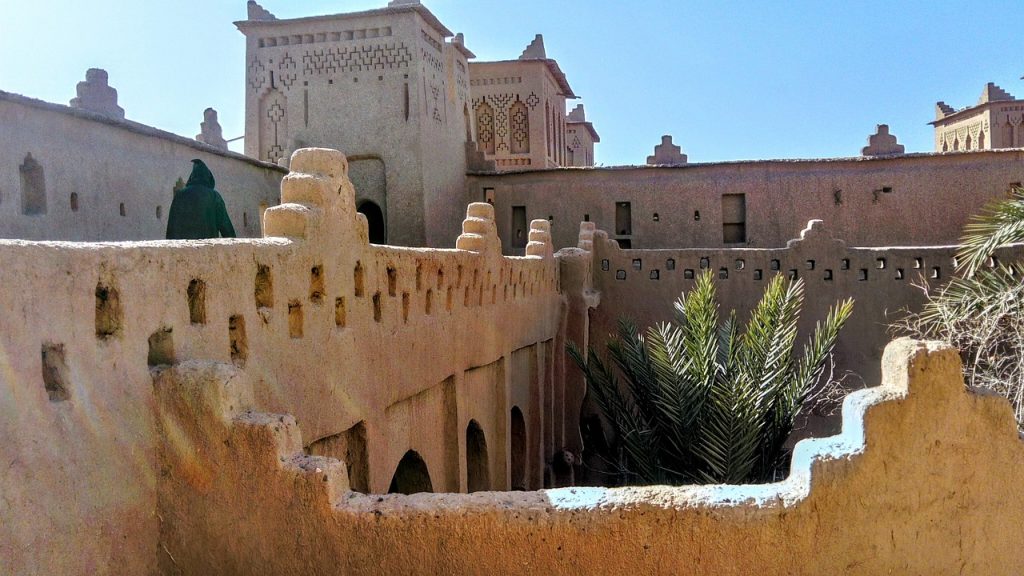
The cultural origins of Morocco’s woodworking motifs and symbols are deeply embedded in its history. In the past, people would adorn palaces, mosques, and other significant buildings throughout the nation with these designs. The most common forms of traditional Moroccan design consist of geometric shapes such as squares and triangles, along with floral patterns, animals, and human figures.
Traditional DesignsCultural InfluencesExamplesGeometric ShapesIslamic ArtSquaresFloral PatternsBerber CultureTrianglesAnimalsArchitectureHuman Figures
These intricate carvings have evolved due to external influences from different cultures that have impacted Morocco throughout its long history. For example, Islamic art has been a strong influence on many of the country’s designs. This is particularly evident in the use of calligraphy which often adorns pieces of carved woodwork. Similarly, Berber culture has had an impact on many contemporary Moroccan symbols; for instance, it is common to see representations of camels or nomads carved into wooden items around the country. Lastly, architecture plays a fundamental role in shaping modern-day Moroccan designs; arches are commonly featured within wooden artifacts as they symbolize strength and power in Moroccan society.
Moreover, to various cultural influences on Moroccan woodworking motifs and symbols, there is evidence that traditional designs can be traced back to pre-Islamic times – centuries before the arrival of Islam in Morocco. These ancient symbols include a range of stars, circles, and crosses which represent sun worship or fertility cults that predated religion altogether. Regardless of their origin, these primitive images continue to feature prominently in Moroccan craftsmanship today.
Morocco’s rich tapestry of traditional designs has undoubtedly contributed significantly to the distinct style we see today; each pattern conveys meaning through symbolism which will likely remain unchanged for years yet to come.
Religious Significance Of The Motifs And Symbols
Moroccan woodworking motifs and symbols are deeply rooted in the religious symbolism of Morocco. Many of these designs were believed to have originated from ancient Islamic beliefs that were used to protect people from evil spirits and bad luck. You can spot these symbols on furniture, doors, walls, and other structures throughout the country. They often include geometric shapes, animals, plants, stars, moons, and even words or phrases associated with their traditional religion.
The most common religious motifs seen in Moroccan doors and woodworking are the crescent moon which is a symbol of Islam; star patterns representing the five pillars of Islam; floral designs depicting paradise; birds such as peacocks and other exotic creatures like dragons; calligraphy that reads “Allah” or “God”; and verses from the Qur’an. All these symbols signify spiritual protection against harm as well as prosperity for those who adorn them into the doors of their homes.
However, it must be noted that some of these motifs hold secular meanings depending on their context and usage. For instance, while certain animal figures might represent piety in one setting they indicate power or wealth in another circumstance. The cultural relevance of each motif should always be taken into account when choosing designs for your home.
Furthermore, to be aesthetically pleasing, there is much more hidden beneath many religious traditional artisanal woodworking techniques and projects than meets the eye. From intricate carvings to symbolic paintings created by artisans centuries ago – there is an infinite amount of knowledge to uncover about how our ancestors interpreted faith through traditional artisanal woodworking techniques. Even today we continue to see examples of this craftsmanship across Morocco, keeping alive its unique tradition within modern society.
Craftsmanship Techniques Used For Creating The Designs
Moroccan woodworking involves a variety of craftsmanship techniques used to create intricate, symbolic motifs and designs. The traditional tools employed by artisans are chisels, planes, saws, and gouges. These artisanal techniques involve carving shapes into the wood; such as circles, squares, or triangles. Artisans use inlay techniques where they incorporate different types of colored woods together to produce more complex designs.
These craftsmanship techniques have been handed down through generations of woodworkers and have remained largely unchanged over time. This has enabled them to preserve their culture’s rich heritage while still creating new works that reflect modern trends. Here are five common craftsmanship techniques used for creating Moroccan woodwork:
- Carving – using tools like chisels or gouges to carve shapes into the surface of the woodwork
- Inlaying – incorporating two different types of woods together to form an artistic pattern
- Marquetry – piecing together thin pieces of veneer into a mosaic design
- Turning – spinning a piece of wood on a lathe and shaping it with various tools
- Finishing – applying waxes, oils, or lacquers for extra shine and protection
The combination of these craftsman skills allows artisans to create unique works that stand out from other forms of decorative artwork. By utilizing these ancient methods along with contemporary styles, Moroccan woodworkers can express their creativity while preserving centuries-old traditions passed down through generations.
Popularity Among Tourists
The popularity of Moroccan woodworking motifs and symbols among tourists is undeniable. Tourists are captivated by the intricate artistry of traditional craftsmanship techniques, as well as the historical significance behind each piece. This interest has resulted in a booming industry for those skilled enough to create these works of art.
Motif/SymbolMeaningPopularityZemmour DesignsProtection from Evil SpiritsVery HighAlhambra PatternsGood Fortune & WealthHighAissaoua SymbolsPositive Energy FlowModerate
As Morocco’s tradition-rich culture continues to be explored, more and more people have become fascinated with its unique woodworking motifs and symbols. For example, Zemmour designs offer a sense of protection from evil spirits while Alhambra patterns signify good fortune and wealth. Even the less known Aissaoua symbols can bring positive energy flow into one’s life. All three are popular choices among visitors looking to take home a tangible reminder of their travels in Morocco.
Tourism officials have taken notice of this increased demand for authentic handmade crafts featuring Moroccan woodworking motifs and symbols, which has led to various efforts to promote local artists who specialize in crafting them. Various street markets now showcase these creations that were once only accessible through private collections or small workshops hidden away in medinas. As such, an array of options for souvenirs is available for tourists seeking the perfect memento from their trip abroad.
In summary, Moroccan woodworking motifs and symbols have seen great success among tourists due to their cultural relevance combined with the expert craftsmanship techniques required to produce them. From zemmour designs offering protection from evil spirits to Aissaoua symbols providing positive energy flow – there is no shortage of interesting items that can make wonderful keepsakes!
Preservation Of The Symbolism In Modern Times
Moroccan woodworking motifs and symbols have been preserved in modern times thanks to their cultural significance. Many artisans continue to practice traditional techniques, such as carving intricate designs into the wood surface or creating geometric patterns with a variety of colors. The symbolism associated with these motifs is often deeply rooted in Moroccan culture, conveying messages about family values, faith, and social status.
The preservation of these symbols can be seen in many ways throughout Morocco today. One example includes furniture that has been intricately decorated with symbolic imagery, which serves both aesthetic and functional purposes within homes. On top of that, there are various artifacts found at marketplaces that feature Moroccan woodworking motifs and symbols, providing insight into the rich history behind them.
Besides this physical form of preservation, knowledge about the symbolism of these motifs is being passed down from generation to generation through oral traditions. Artisans share stories about what each symbol represents and how it relates to their lives, allowing newer generations to further understand its importance in their culture.
Preserving the symbolism associated with Moroccan woodworking motifs and symbols can help keep this vital part of the country’s heritage alive for future generations. It allows people to appreciate not only its beauty but its cultural value on a deeper level by connecting them to past generations who crafted these items centuries ago.
Frequently Asked Questions
What Type Of Wood Is Usually Used In Moroccan Woodworking?
When it comes to Moroccan woodworking, many types of wood are used. Cedar and olive woods are popular choices due to their durability and resistance to the dry climate in Morocco. Juniper wood is often chosen for its distinctive grain patterns and vibrant colors, while cypress wood is a more economical option that still offers an attractive finish.
Apart from their visual appeal, each type of cedar wood possesses distinct characteristics that make them suitable for various projects. For example, cedarwood is lightweight yet strong enough to withstand outdoor conditions thanks to its inherent oils. It’s resistant to rot and decay, making it perfect for furniture or other items designed for heavy use in outdoor spaces. Olive wood on the other hand has a beautiful reddish-brown color with subtle hues of yellow which makes it great for ornamental pieces such as sculptures or carvings.
Deciding which type of wood is most suitable for your project primarily depends on your taste. Still, juniper wood is a remarkably adaptable material that can serve multiple purposes, from crafting cabinets to producing decorative window and door embellishments. Cypress tends to be less expensive than the other woods mentioned but still provides a high-quality look when finished properly. Furthermore, some craftsmen prefer using cypress because they find that its light weight allows them greater freedom when crafting intricate cabinet designs.
No matter which type of woodwork you choose for your project there are certain considerations to keep in mind when selecting materials for Moroccan woodworking motifs and symbols. Moreover, research should always be done beforehand regarding the specific qualities needed from the selected material in order to secure maximum success with your creation.
How Long Do Moroccan Woodworking Projects Usually Take To Complete?
Moroccan woodworking is known for its exquisite craftsmanship and intricate wooden designs. While some smaller projects take only a few hours, more complex pieces could take days or even weeks of dedicated effort. To get an idea of the typical duration required to complete a woodworking project in Morocco, three key factors must be taken into account:
The Type Of Wood Used: Different types of wood require different levels of workmanship to achieve the cabinet the desired look and feel. For cabinets for example, softer woods such as cedar and pine tend to be easier to carve and shape than hardwoods like oak or mahogany which often require more time-consuming techniques like sanding and staining.
The Level Of Skill Involved: A skilled craftsman with years of experience generally can complete a project much faster than someone just starting. Further, certain carving techniques may vary and add extra time depending on their complexity.
The Size And Complexity Of The Project: As with any type of art form, larger pieces usually take longer because they involve multiple steps to create the finished product. Similarly, projects with highly detailed patterns or scenes may require additional care and attention to due diligence when it comes to crafting them properly.
Considering all these elements combined, one can expect a typical Moroccan woodworking project to range from several hours up to many days depending on its size and level of intricacy. Moreover, experienced woodworkers are likely capable of completing elaborate works quicker due to their honed skill sets developed over years of practice and dedication. Eventually, no two projects are exactly alike so each must be approached differently if you want your final result to turn out beautiful!
What Are The Most Popular Symbols And Motifs Among Tourists?
When it comes to Moroccan woodworking motifs and symbols, tourists are often drawn to intricate patterns and traditional designs. Whether they be looking for souvenirs or decorating their homes with something unique, many visitors find themselves captivated by these ancient symbols. From intricately hand-carved stars of David to stylized representations of camels, there is a wide variety of popular tourist symbols that can be seen in Morocco today.
One example is the cedar tree symbol which has been used throughout North Africa since ancient times as an emblem of strength and protection. This particular symbol can be found on boxes, furniture, jewelry, and other items crafted by local artisans. The design usually consists of two parallel curved lines representing branches intertwined with each other, although more complex versions exist featuring various shapes such as circles and diamonds inside the main form.
Another common motif among tourists is a series of interconnected hexagons known as ‘mousharabieh’ (or honeycomb). These interlocking geometric shapes have been linked to Islamic beliefs about perfection but represent the unity between people from different backgrounds or cultures; this makes them particularly attractive to travelers seeking meaningful gifts to take home from their travels. Not to mention, mousharabieh also serves as a reminder of the importance of preserving heritage when visiting foreign lands.
In the end, no discussion about Moroccan woodworking would be complete without mentioning the star-and-crescent moon combination which is another popular symbol commonly associated with Islam but present in pre-Islamic culture in North Africa. This iconic image has come to signify both faiths as well as beauty due to its graceful shape and intricate details making it one of the most sought-after symbols amongst travelers seeking tangible memories from their visits abroad.
No matter what type of symbolism you seek when traveling around Morocco, you’re sure to find something special that captures your imagination – if it’s through traditional carvings depicting centuries-old stories or modern interpretations inspired by contemporary life in this exotic corner of the world!
What Are The Best Tools To Use For Creating Intricate Woodworking Designs?
When it comes to creating intricate woodworking designs, the tools used are just as needed as the design itself. Moroccan woodworking is a craft that requires specialized cutting and shaping tools to create beautiful patterns and motifs. From chisels and saws to carving knives and drills, there are plenty of options available for those looking to make an impact with their Moroccan-inspired creations.
The most common cutting tool used by Moroccan woodworkers is the hand plane – also known as a scrub or block plane. This tool has been around since Ancient Egypt, but its use was perfected during the Ottoman period when Morocco became part of this empire. The hand plane allows one to shape intricate details on hardwoods such as cedar, teak, and mahogany without leaving any visible marks on the surface. It’s perfect for making precise cuts into small spaces or for creating delicate curves for decorative purposes.
Shaping tools are another vital part of crafting Moroccan woodworking motifs and symbols. These include gouges, rasps, drawknives, and spokeshaves which can be used to carve out detailed shapes from timber surfaces or even thin sheets of metal like copper or brass. Although these tools require more skill than traditional cutting tools, they offer greater control over how much material needs to be removed to achieve the desired effect. For example, a gouge could be used to carefully remove sections of curved lines on wooden sculptures while still preserving the overall form of the piece.
Lastly, sanding blocks are perhaps one of the most underrated yet indispensable tools when it comes to finishing off your masterpiece! Sanding will smooth out bumps or ridges left behind after using other woodworking tools so that you have an even surface once again before applying glue or varnish sealer onto your creation. By doing so you’ll ensure that all edges match up perfectly when constructing furniture pieces such as cabinets or tables – eventually giving them a professional polish worthy of appreciation!
How Can Modern Woodworkers Keep The Symbolism Alive In Their Work?
As modern woodworkers, we can keep the symbolism alive in our work by utilizing traditional Moroccan woodworking motifs and symbols. Through these designs, we evoke a sense of culture and history that is embodied within each piece. We must first understand the fundamentals of creating intricate woodworking designs with the best tools for this craft. Once those basics are understood, it’s time to explore the symbolic aspects of Moroccan woodworking.
Incorporating traditional symbols into modern pieces is an effective way to honor ancient culture through artistry. Woodworking motifs such as geometric shapes, abstract patterns, and zellige tilework can be used to add unique character to your design. By understanding their symbolic meaning, you’ll be able to create meaningful works of art that tell stories from centuries past.
It’s vital to stay true to the original intent of Moroccan woodworking while evolving its style over time so that it remains relevant today. This means incorporating more contemporary elements like bright colors or natural materials into your pieces while still keeping them rooted in tradition. Keeping up with trends can help assure that your work stands out while staying respectful of its cultural origins.
Eventually, bringing together both old and new techniques allows us to create beautiful works that embody timeless values and principles even in a rapidly changing world. With careful consideration given to every detail – from selecting quality materials down to choosing a fitting finishing touch – modern woodworkers have the opportunity to show their respect for heritage without sacrificing creativity along the way.
Moroccan woodworking is an art form with a long and rich history, one that has been passed down from generation to generation. It’s no surprise then that the motifs and symbols of Moroccan woodworking are so beloved by tourists who come seeking unique souvenirs for their homes or collections. The intricate designs created in these pieces can take up to several weeks to complete, depending on the size and complexity of the project.
The best tools for creating these masterpieces are chisels, mallets, and hand saws; although power tools such as jigsaws can be used. One interesting statistic worth noting is that some Moroccan woodworkers have even been able to create entire furniture sets out of just one tree! This shows us how much skill is required when crafting these beautiful works of art.
I hope that modern woodworkers and architects will not forget the importance of symbolism in this craft. By staying true to traditional motifs and symbols while bringing something new into their work, they keep alive this amazing legacy for years to come.

